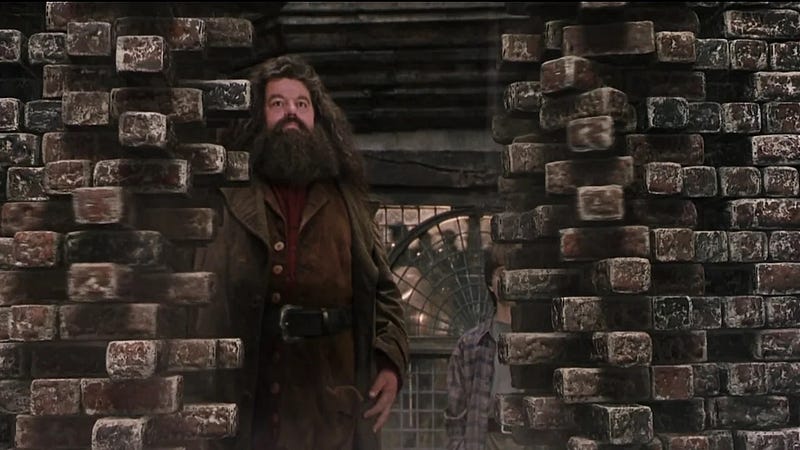
Firstly, thank you for your wonderful support and feedback on Alice and Bob in Quantum Land! Many of you have asked for more about the “Overcoming Barriers” section — how particles seem to cross obstacles they should not be able to pass. This write-up is especially for you, as we explore one of the strangest and most fascinating ideas in physics: quantum tunneling.
Barriers in the Everyday World
Imagine throwing a ball at a tall brick wall. No matter how hard you throw, the ball either bounces back or simply stops. This is a fundamental classical rule of our everyday world: objects need enough energy to overcome obstacles.
Now imagine this: you throw the same ball, and it suddenly appears on the other side of the wall. No cracks in the wall, no damage to the ball — it is as if it has “tunneled” through the barrier.
This might sound like magic, but in the quantum world, it is a real phenomenon. Scientists call it quantum tunneling, and it happens because, at the smallest scales, particles do not behave the way we might expect.
To understand tunneling, we first need to look at how particles like electrons behave at the quantum level — and the surprising connection to light.
Why Is Light Like a Particle? A Historical Perspective
For much of history, light was thought to be purely a wave. Experiments showed that it could bend around corners (diffraction) and produce interference patterns, like ripples on a pond. These behaviors were consistent with the idea that light was a wave traveling through space.
However, in 1905, Albert Einstein made a groundbreaking discovery while investigating the photoelectric effect — a phenomenon where light shining on a metal surface causes it to emit electrons. Experiments showed something puzzling:
No electrons were ejected if the light’s frequency (color) was too low, regardless of its brightness.
When light of a high enough frequency hit the surface, electrons were immediately emitted, even if the light was dim.
Einstein proposed that light does not just behave as a wave. Instead, it is made up of tiny packets of energy called photons. Each photon has an energy determined by the frequency of the light, and only photons with enough energy can knock electrons loose.
This revelation — that light behaves as both a wave and a particle — earned Einstein the Nobel Prize in Physics and fundamentally changed our understanding of the universe.
The Double-Slit Experiment: Waves, Particles, and Probabilities
The idea of light acting as a wave persisted because it produced interference patterns — like those seen in the famous double-slit experiment.
In this experiment, light passes through two narrow slits, and the resulting pattern on a screen shows alternating bright and dark bands — a hallmark of wave interference. But when scientists repeated the experiment with electrons, they found something even stranger:
When electrons were fired one by one through the slits, they still created an interference pattern over time, as if each electron were behaving like a wave.
However, when detectors were placed at the slits to observe which slit the electrons passed through, the interference pattern disappeared. The electrons behaved like particles instead.
This revealed a profound truth: particles like electrons can exhibit wave-particle duality. They are not just tiny marbles; they also behave like waves, spreading out and interacting with the world in unexpected ways.
What Does This Mean for Matter?
Wave-particle duality is not unique to light. Electrons, protons, and even entire atoms exhibit this dual nature. Hence, instead of knowing a particle’s exact velocity, and position at any time, quantum are described by wave functions: the probability of that particle to have any particular velocity at a particular position and time. Simply put, it’s a scientists’ way to capture the in what condition the particle might be at any given time.
This means that a particle does not occupy one precise location until it is observed or measured. Instead, it exists as a “cloud of probabilities,” spreading out like ripples on a pond, like a blurry picture!
How is it Related to Tunneling?
This wave-like nature of particles is key to understanding tunneling. When an electron encounters a barrier — such as an insulating layer in a device or the forces holding it inside an atom — classical physics predicts it should stop unless it has enough energy to cross. But quantum mechanics tells a different story.
The electron’s wave function does not stop abruptly when it hits the barrier. Instead, part of the wave “leaks” into and beyond the barrier. If the barrier is thin enough or not too tall, this leakage creates a small chance that the electron itself will appear on the other side.
It is as if the electron has found a tunnel through the barrier — but here is the twist: the “tunnel” is not a physical pathway. It is invisible to everything but the electron. To us, the barrier appears solid and unbroken. Yet, through its wave function, the electron behaves as though it briefly explores a hidden route that allows it to emerge on the other side.
But this tunneling does not happen on the first try — or even the hundredth. Imagine the electron repeatedly “knocking” at the barrier. Most of the time, it fails to cross. But just sometimes, out of all those attempts at crossing , it might just succeed.
This is because quantum processes happen at astonishing speeds. Electrons move on timescales of femtoseconds — a millionth of a billionth of a second. In just a fraction of a second, it might make millions of attempts. With enough chances, even a tiny probability of success becomes enough to cross the barrier. The electron might fail hundreds of thousands of times, but on the millionth attempt, it passes through.
This combination of rapid motion and probabilistic behavior is what makes quantum tunneling possible!
Why Tunneling Matters: Real-World Examples
Quantum tunneling may sound abstract, but it drives some of the most essential processes in the universe and technology:
Stars Shine Because of Tunneling: In the core of the sun, hydrogen nuclei (protons) collide under immense heat and pressure, creating the conditions for nuclear fusion. Fusion occurs when two protons combine to form helium, releasing vast energy. However, protons repel each other strongly due to their positive charges, creating a high energy barrier. Classically, fusion would be nearly impossible, as the protons do not have enough energy to overcome this barrier. Quantum tunneling solves this problem: through their wave-like nature, protons can “leak” through the barrier and fuse, releasing energy that powers the sun. Without tunneling, stars could not shine, and life on Earth would not exist. This phenomenon demonstrates how quantum mechanics governs processes critical to sustaining the universe.
Tunneling Powers Modern Technology: Quantum tunneling is essential in electronics, powering devices like flash memory and tunnel diodes. In flash memory, electrons tunnel through ultra-thin insulating layers to store and erase data, enabling compact, efficient data storage. Tunnel diodes rely on tunneling for ultra-fast switching in circuits, using electrons’ ability to cross barriers probabilistically with minimal energy loss. Unlike classical systems that require significant energy to overcome obstacles, these technologies exploit tunneling to achieve high-speed and low-power functionality. This principle has revolutionized computing and communication, making modern electronic devices smaller, faster, and more efficient.
Seeing the Invisible: The Scanning Tunneling Microscope (STM) uses quantum tunneling to reveal atomic-scale details of material surfaces. A sharp metal tip is placed nanometers above the surface, and a small voltage causes electrons to tunnel across the gap, creating a current. The current’s strength depends on the tip’s distance from the surface, allowing precise mapping of atomic structures. By scanning the tip, the STM builds detailed images of individual atoms, revealing their arrangement. This breakthrough technology has transformed nanotechnology and materials science, offering unprecedented insights into the quantum world and enabling advancements in quantum research.
Radioactive Decay: Radioactive decay, the process by which unstable nuclei emit particles to become more stable, occurs through quantum tunneling. Inside the nucleus, particles like alpha particles are trapped by strong nuclear forces, creating a high energy barrier they cannot classically escape. However, their wave-like nature allows them to tunnel through the barrier, escaping the nucleus. This process powers geothermal energy, as the decay of radioactive elements generates heat within the Earth’s crust. It also underpins radiometric dating, which measures isotopic decay to determine the age of rocks and fossils. Quantum tunneling thus plays a vital role in natural energy cycles and our understanding of Earth’s history.
The Subtle Power of Tunneling
Quantum tunneling shows us that particles do not follow the rigid rules of the classical world. Instead, their wave-like nature allows them to cross barriers in ways that seem impossible.
Its effects are profound: it powers the stars, enables modern electronics, and helps us see the atomic world. At its core, tunneling reminds us that even the smallest phenomena can shape the universe in extraordinary ways.
— — —
You can connect with me on LinkedIn or here on Medium, where I share more stories about science, curiosity, and the quantum world.


